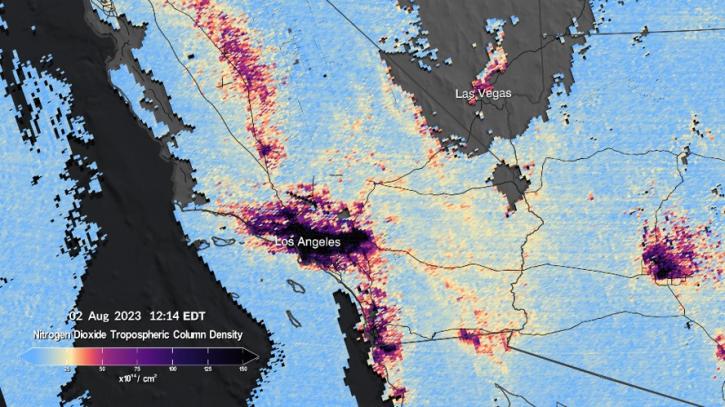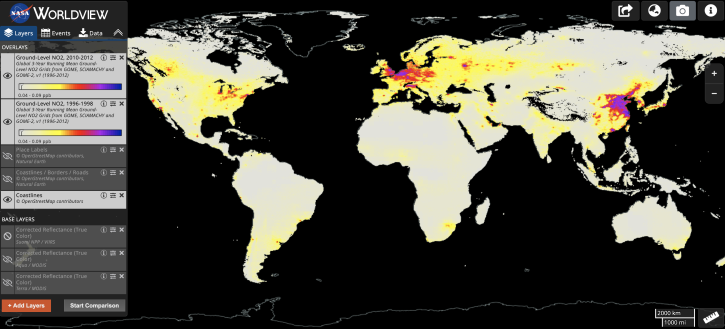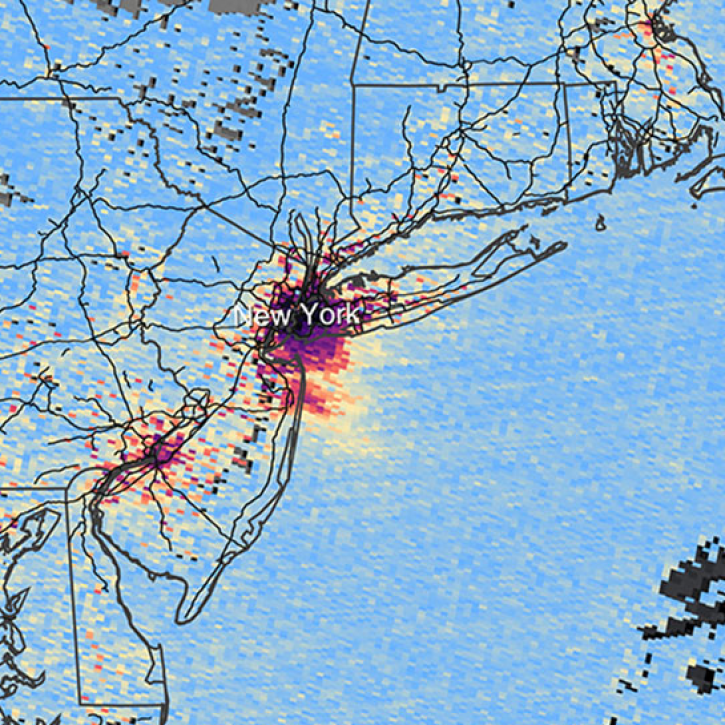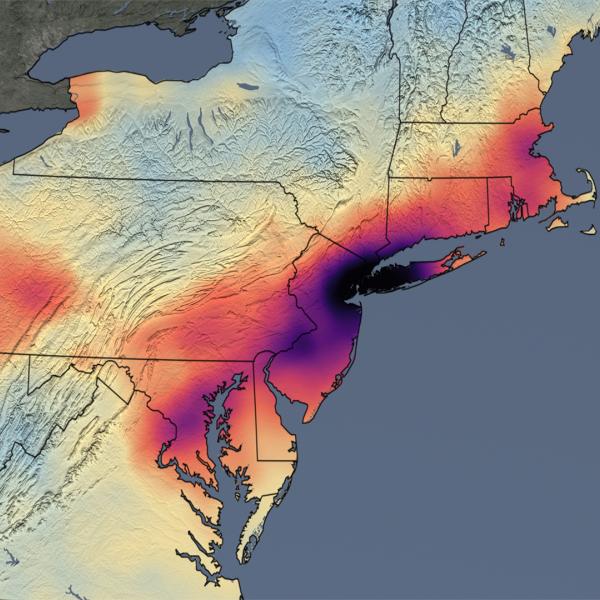Access a range of datasets and data tools to further your nitrogen dioxide research.
Nitrogen dioxide (NO2) is a gas that is considered a pollutant in large quantities. The primary sources of nitrogen dioxide on Earth are automobile exhaust, smoke from industry, and the burning of fossil fuels. It is also produced when nitric oxide (NO), another nitrogen oxide that forms during combustion, reacts with oxygen.
Nitrogen dioxide reacts with other chemicals in the atmosphere to form particulate matter and ozone. This can produce haze, create acid rain, and contribute to nitrogen pollution in coastal waters.
NASA’s Earth-observing instruments collect data on concentrations of trace gases in the atmosphere, including nitrogen dioxide and other nitrogen oxides. These datasets are used to track historical and near real-time global and regional emissions, enabling scientists to study the effects of nitrogen oxides on human health, air quality, and weather patterns.
Learn How to Use Nitrogen Dioxide Data




Join Our Community of NASA Data Users
While NASA data are openly available without restriction, an Earthdata Login is required to download data and to use some tools with full functionality.
Learn About the Benefits of Earthdata LoginFrequently Asked Questions
Earthdata Forum
Our online forum provides a space for users to browse thousands of FAQs about research needs, data, and data applications. You can also submit new questions for our experts to answer.
Submit Questions to Earthdata Forumand View Expert Responses